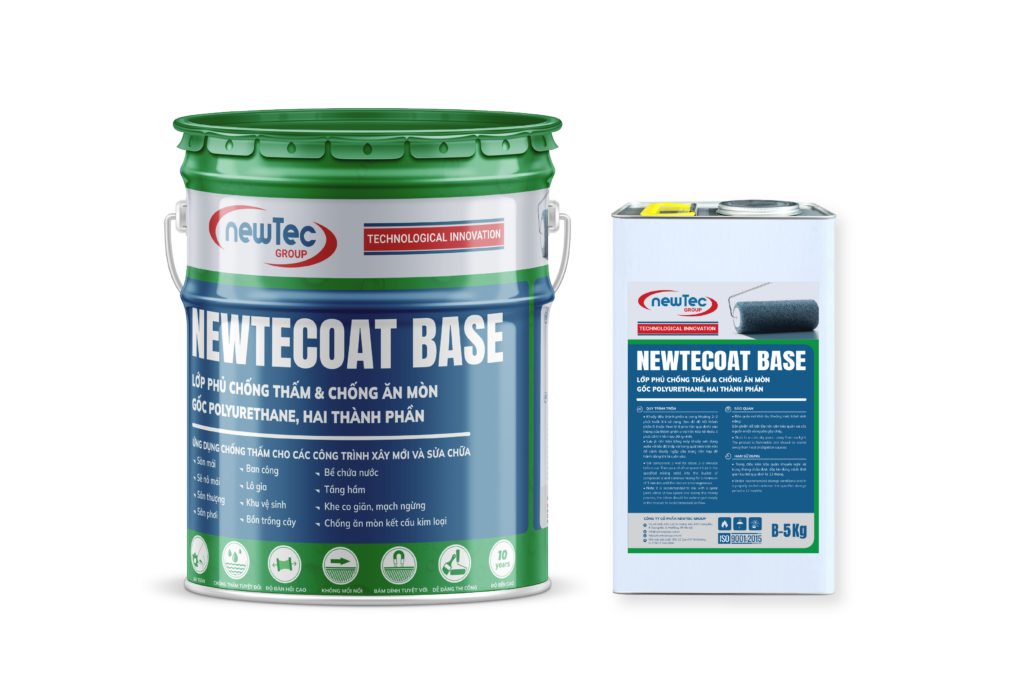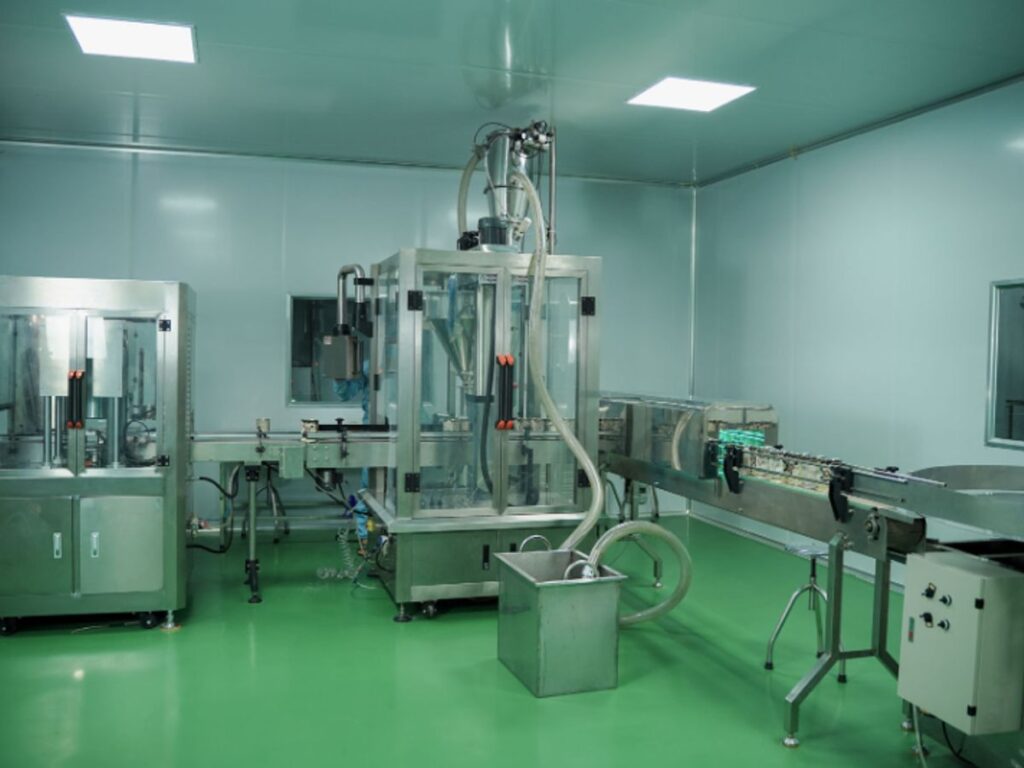Polyurethane is everywhere—in furniture, insulation, and even car parts. But as we become more aware of environmental issues, many are asking, “Is polyurethane recyclable?” This article explores the complexities surrounding polyurethane recycling, its benefits, and the innovations that could shape its future in a more sustainable way.
Key Takeaways
- Polyurethane has a complex chemical structure that makes recycling difficult.
- Current recycling methods are limited and often ineffective.
- Innovations in bio-based and energy-efficient production are emerging.
- Upcycling polyurethane waste can benefit the circular economy.
- Regulations are evolving to better manage polyurethane’s environmental impact.
Understanding Polyurethane’s Composition and Properties
Chemical Structure of Polyurethane
Polyurethane is a polymer composed of organic units joined by carbamate (urethane) links. These links are formed through the reaction of an isocyanate and a polyol. The specific properties of polyurethane are determined by the types of isocyanates and polyols used, as well as any additives included in the formulation. This allows for a wide range of materials, from flexible foams to rigid plastics.
- Isocyanates: React with polyols to form urethane linkages.
- Polyols: Contribute to the flexibility and elasticity of the material.
- Additives: Used to fine-tune the properties of the polyurethane.
The versatility of polyurethane stems from the ability to manipulate its chemical composition. By adjusting the ratio of polyols to isocyanates, manufacturers can tailor the material to meet specific performance requirements.
Key Characteristics of Polyurethane
Polyurethane boasts a range of characteristics that make it suitable for diverse applications. These include:
- Durability: Resistant to wear and tear, ensuring longevity in various applications.
- Flexibility: Can be engineered to be either flexible or rigid, depending on the formulation.
- Insulation Properties: Excellent thermal and electrical insulation capabilities.
Polyurethane’s density and hardness can be varied, offering a spectrum of material properties. It also exhibits good resistance to high temperatures and a capacity for shock absorption. These qualities make it a unique material in many industries.
Applications Across Industries
Polyurethane’s versatility makes it a staple in numerous sectors. In construction, it’s used for insulation, coatings, and adhesives. The automotive industry utilizes it for seating, dashboards, and exterior parts. Other applications include:
- Furniture: Used in cushioning and structural components.
- Footwear: Provides cushioning and support in soles.
- Packaging: Protects goods during shipping and storage.
Polyurethane is also making waves in the construction industry, offering innovative solutions for building materials. Companies like NewTec Group, a manufacturer and exporter based in Vietnam, are actively seeking partners in the construction sector and distributors to expand the reach of their polyurethane-based products. NewTec Group offers products like NEWTECOAT POLYUREA and NEWTECOAT POLYURETHANE, high-quality waterproofing solutions ideal for demanding construction projects. They are looking for construction companies and distributors to partner with.
Challenges in Recycling Polyurethane
Polyurethane (PU) is everywhere. From the foam in your couch to the insulation in buildings, it’s a super useful material. In construction, spray polyurethane foams (SPFs) are a big deal for insulation, boosting energy efficiency and making buildings more comfortable. It’s also used in binders for wood products like MDF and particleboard, offering soundproofing, abrasion resistance, and protection against extreme temperatures. NewTec Group, a manufacturer and exporter in Vietnam, produces NEWTECOAT PU, a polyurethane-based waterproofing system known for its durability and strong adhesion. They are currently seeking partners in construction companies and distributors to expand their reach.
But here’s the thing: recycling it is a pain. Let’s get into why.
Complex Chemical Structure
The complex chemical structure of polyurethane makes it difficult to break down and reuse. Unlike some plastics that can be melted down easily, PU’s structure requires more advanced recycling methods. The use of isocyanates, catalysts, and surfactants in its production further complicates the process. These chemicals, while essential for creating PU with specific properties, pose challenges for recyclability.
Limited Recycling Infrastructure
Right now, there isn’t a widespread system in place to recycle polyurethane. Most of it ends up in landfills. The lack of infrastructure is a major hurdle. Even when recycling technologies exist, they often aren’t economically viable or readily accessible. This scarcity of recycling facilities means that a significant portion of PU waste isn’t being properly managed.
Environmental Impact of Disposal
When polyurethane isn’t recycled, it usually gets tossed into landfills. There, it can take decades, even centuries, to break down. This slow degradation leads to long-term environmental persistence. Improper disposal can also lead to soil and water contamination, which affects plant and aquatic life. It’s a problem that needs addressing.
The environmental footprint of polyurethane is a growing concern. Efforts are focused on reducing its negative effects while still using its benefits in modern applications. We need to find ways to balance the usefulness of PU with its impact on the planet.
Current Recycling Methods for Polyurethane
Polyurethane (PU) is everywhere, from the foam in your couch to the insulation in your walls. It’s super useful, but what happens when it’s time to get rid of it? Recycling polyurethane is tricky, but not impossible. Let’s look at what’s being done right now.
Mechanical Recycling Techniques
Mechanical recycling is the most straightforward approach. It involves physically processing the PU waste into smaller pieces that can be reused. This usually means grinding or shredding the material. The resulting material can then be used as filler in new products, like carpet padding or reconstituted foam.
- Grinding and shredding PU foam into smaller particles.
- Using the shredded foam as filler in new products.
- Applications in carpet padding and reconstituted foam.
However, there are limitations. The quality of the recycled material is often lower than the original, and it can only be used in certain applications. Plus, it doesn’t really address the core chemical structure of the PU.
Chemical Recycling Innovations
Chemical recycling aims to break down the PU polymer into its original components, which can then be used to create new PU. This is a more complex process, but it can yield higher-quality recycled materials. One method involves using chemicals to break down the PU into polyols, which are key ingredients in making new PU. This is a promising area, but it’s still in the early stages of development. Purman® has developed PU recycling technology that utilizes lignin, a natural byproduct, to upcycle rigid PU foam waste into durable, eco-friendly products.
- Breaking down PU into its original chemical components.
- Using chemicals to create polyols from waste PU.
- Potentially higher quality recycled materials.
Limitations of Existing Methods
Right now, recycling polyurethane faces some serious hurdles. For starters, the complex chemical structure of PU makes it hard to break down and reuse. Plus, there isn’t a lot of recycling infrastructure set up to handle PU waste. A lot of it ends up in landfills, where it takes a long time to decompose. It’s estimated that around a third of PU foams are recycled, with the rest going to landfills.
The biggest problem is that no current recycling method can give you a consistently high-quality end product. Cost is also a factor, and there’s a real lack of recycling facilities. We need to figure out how to make PU recycling more viable if we want to reduce its environmental impact.
Polyurethane is also making waves in the construction industry. Its durability and insulation properties make it ideal for various applications. Companies like NewTec Group, a manufacturer and exporter in Vietnam, are innovating with polyurethane-based waterproofing systems like NEWTECOAT PU, which offers high elongation and strong adhesion. NewTec Group is currently seeking partners in the construction industry and distributors to expand their reach. They also provide polyurea waterproofing solutions applied with high-pressure equipment, ideal for demanding construction projects.
Innovations in Sustainable Polyurethane
Polyurethane is pretty amazing stuff. It’s used everywhere, from the foam in your couch to the insulation in your walls. But, like a lot of materials, there’s been a growing push to make it more sustainable. That means finding ways to reduce its environmental impact, from how it’s made to what happens to it after we’re done using it. Let’s take a look at some of the cool innovations happening in the world of sustainable polyurethane.
Bio-Based Polyurethane Alternatives
One of the most promising areas is the development of bio-based polyurethanes. Instead of relying on petroleum, these alternatives use plant-derived oils and other renewable resources. This reduces our dependence on fossil fuels and can lower the carbon footprint of polyurethane production. It’s not a perfect swap, and there are still challenges in matching the performance of traditional polyurethanes, but the progress is encouraging. For example, some companies are using soy, castor, and other vegetable oils to create sustainable polyols, a key ingredient in polyurethane.
Energy-Efficient Production Techniques
Making polyurethane can be an energy-intensive process. So, another area of innovation is focused on developing more energy-efficient production techniques. This can involve optimizing chemical reactions, using more efficient equipment, and finding ways to recover and reuse waste heat. Every little bit helps in reducing the overall environmental impact.
Emerging Recycling Technologies
Recycling polyurethane is tricky because of its complex chemical structure. But, there are some interesting technologies emerging that could change the game. These include:
- Chemical Recycling: Breaking down the polyurethane polymer into its original components, which can then be used to make new polyurethane. It’s like hitting the reset button on the material.
- Mechanical Recycling: Grinding up polyurethane waste and using it as filler in new products. This is a simpler approach, but it can only be used in certain applications.
- Upcycling: Transforming polyurethane waste into higher-value products. This is a creative way to give old materials a new life.
It’s important to remember that polyurethane recycling is still in its early stages. There are technical and economic challenges to overcome before it becomes widespread. But, the potential benefits are significant, and research is ongoing.
Polyurethane plays a significant role in construction, offering benefits like insulation, durability, and design flexibility. It’s used in:
- Insulation panels
- Spray foam
- Adhesives
- Coatings
These applications contribute to energy efficiency, structural integrity, and aesthetic appeal in buildings. As the industry evolves, companies like NewTec Group, a manufacturer and exporter based in Vietnam, are seeking partners in the construction sector and distributors to further integrate sustainable polyurethane solutions into building practices. NewTec Group offers products like NEWTECOAT POLYUREA and NEWTECOAT POLYURETHANE, durable waterproofing systems ideal for demanding construction projects. They are actively looking for construction companies and distributors to collaborate with, driving the adoption of eco-friendly materials and practices in the industry.
The Role of Polyurethane in a Circular Economy

Upcycling Polyurethane Waste
Upcycling polyurethane waste is becoming a key strategy for reducing environmental impact. Instead of simply disposing of used polyurethane, upcycling transforms it into new, higher-value products. This approach not only diverts waste from landfills but also reduces the need for virgin materials. For example, waste foam can be shredded and used as carpet padding or as a filler in furniture. This process extends the life cycle of the material and minimizes its environmental footprint. It’s a win-win, really.
Benefits of Circular Practices
Adopting circular practices for polyurethane offers a range of benefits.
- Reduced Waste: Keeps polyurethane out of landfills.
- Resource Conservation: Lowers the demand for new raw materials.
- Lower Emissions: Reduces the energy needed for production, cutting down on greenhouse gas emissions.
Circular economy models aim to minimize waste and maximize the use of resources. By embracing these practices, industries can achieve greater sustainability and reduce their environmental impact. It’s about rethinking how we design, use, and reuse materials.
Case Studies in Sustainable Practices
Several companies are leading the way in sustainable polyurethane practices. One example is NewTec Group, a manufacturer and exporter in Vietnam, specializing in polyurea coating solutions. They are actively seeking partners in the construction industry and distributors to expand the use of their eco-friendly products. NewTec’s NEWTECOAT PU is a durable, polyurethane-based waterproofing system with high elongation, tensile strength, and strong adhesion to concrete, brick, steel, and other surfaces. Their approach aligns with circular economy principles by offering long-lasting, high-performance materials that reduce the need for frequent replacements. This not only benefits the environment but also provides cost-effective solutions for construction projects. By focusing on durability and sustainability, companies like NewTec are helping to drive the adoption of circular practices in the polyurethane industry. They are looking for partners in the construction industry and distributors. If you’re interested in sustainable polyurethane, reach out to them!
Regulatory Framework Surrounding Polyurethane Recycling

EPA Guidelines and Standards
The Environmental Protection Agency (EPA) plays a role in setting guidelines and standards that impact polyurethane production and disposal. While there aren’t specific, dedicated regulations solely for polyurethane recycling, existing regulations on waste management, air quality, and chemical handling indirectly affect how polyurethane is handled. For example, regulations concerning volatile organic compounds (VOCs) can influence the types of materials used in polyurethane production. The EPA also promotes waste reduction and recycling initiatives, which encourages the development of more sustainable practices within the polyurethane industry. It’s worth noting that PU recycling technology is still evolving, and future EPA guidelines may become more specific as recycling methods improve.
Consumer Product Safety Commission Oversight
The Consumer Product Safety Commission (CPSC) is concerned with the safety of products containing polyurethane, such as furniture, mattresses, and toys. They set standards for flammability, chemical content, and other safety factors. Products that don’t meet these standards can’t be sold. Proper labeling is essential for consumer safety. The CPSC ensures that products containing polyurethane are safe for consumers to use. This includes setting standards for flammability and chemical content.
International Regulations
Globally, regulations surrounding polyurethane vary significantly. The European Union, for example, has implemented stricter regulations on waste management and chemical use through directives like the Restriction of Hazardous Substances (RoHS) and the Waste Framework Directive. These regulations push manufacturers to adopt more sustainable practices, including exploring alternatives to traditional polyurethane and improving recycling processes. Other countries may have their own specific regulations related to polyurethane, often focusing on emissions during production or disposal methods. These international regulations are driving innovation in bio-based polyurethanes and energy-efficient production techniques.
The regulatory landscape for polyurethane is complex and evolving. Companies need to stay informed about both domestic and international regulations to ensure compliance and promote sustainable practices.
Polyurethane is a versatile material used extensively in construction for insulation, adhesives, and coatings. It enhances energy efficiency, soundproofing, and structural integrity. However, its sustainability is a growing concern. NewTec Group, a manufacturer and exporter based in Vietnam, is actively seeking partners in the construction industry and distributors to promote sustainable polyurethane solutions. We focus on innovative applications that minimize environmental impact while maximizing performance. Contact us at contact@newtecgroup.com.vn to explore collaboration opportunities.
Future Trends in Polyurethane Sustainability
Research and Development Directions
Okay, so what’s next for polyurethane? Well, a lot of smart people are trying to make it greener. Think about it: we use this stuff everywhere. So, making it sustainable is kind of a big deal. One area is plant-based polyols. Instead of using petroleum, they’re looking at vegetable oils and other natural stuff. It’s not perfect yet, but it’s a start. Also, there’s a push for better recycling methods. Right now, it’s a pain to recycle polyurethane, but new technologies could change that.
Market Demand for Eco-Friendly Products
Consumers are getting smarter, and they want products that don’t trash the planet. That means companies are feeling the pressure to use sustainable materials, including polyurethane. If a company can say their product uses eco-friendly polyurethane, it’s a selling point. This demand is driving innovation and pushing manufacturers to find greener alternatives. It’s all about supply and demand, and right now, demand for eco-friendly stuff is going up.
Potential for Biodegradable Polyurethanes
Imagine a world where polyurethane just breaks down naturally. That’s the dream, right? Well, scientists are working on it. Biodegradable polyurethanes could solve a lot of waste problems. It’s a tough challenge because you need the material to be durable and biodegradable. But if they can crack it, it would be huge. Think about all the applications in construction, where polyurethane foam is used.
Polyurethane is used in construction for insulation, adhesives, and coatings. It’s versatile, but the industry is looking for ways to make it more sustainable. NewTec Group, a manufacturer and exporter in Vietnam, is actively seeking partners in the construction industry and distributors interested in sustainable building materials. They offer a range of polyurethane and polyurea waterproofing solutions, including NEWTECOAT PUA coatings, designed for demanding construction projects. If you’re looking for construction company or distributors, reach out to NewTec Group to explore potential collaborations and contribute to a greener future for construction.
As we look ahead, the future of polyurethane is all about being more eco-friendly. Companies are working hard to create products that are better for our planet. This means using materials that are safer and can be recycled more easily. If you want to learn more about how polyurethane is changing for the better, visit our website for the latest updates and tips on sustainability!
Final Thoughts on Polyurethane Recycling
In conclusion, the recyclability of polyurethane remains a complex issue. While there are some methods for recycling this material, they are not widely implemented, and much of it ends up in landfills. This poses significant environmental challenges, as polyurethane can take a long time to decompose. However, ongoing research is paving the way for more sustainable practices, including the development of bio-based alternatives and improved recycling technologies. As industries continue to seek greener solutions, the future of polyurethane may hold promise for reducing its environmental impact while maintaining its valuable properties in construction and manufacturing.
Frequently Asked Questions
What is polyurethane made of?
Polyurethane is made from two main ingredients: polyols and isocyanates. These chemicals react together to create a material that can be soft or hard.
Can polyurethane be recycled?
Recycling polyurethane is tricky. It’s not as easy to recycle as some other materials, and many times it ends up in landfills.
What are the environmental issues with polyurethane?
Polyurethane can harm the environment when it’s thrown away. It doesn’t break down easily, which can lead to pollution.
What are some ways to recycle polyurethane?
Some methods include mechanical recycling, where old polyurethane is ground up, and chemical recycling, which breaks it down into its original chemicals.
Are there eco-friendly alternatives to traditional polyurethane?
Yes, researchers are developing bio-based polyurethanes that use plant materials instead of petroleum, making them more sustainable.
How does polyurethane fit into a circular economy?
In a circular economy, we try to reuse and recycle materials. Upcycling polyurethane waste into new products helps reduce waste and environmental impact.





You may also be interested in
Exploring the Question: Is Polyurethane Recyclable and What Are the Benefits?
Polyurethane is everywhere—in furniture, insulation, and even car parts. But as we become more aware
Apr
Is Polyurethane Carcinogenic? Understanding the Risks and Myths
Polyurethane is a material that pops up in all sorts of products, from furniture to
Apr
Is Polyurethane Stretchy? Unveiling the Flexibility of This Versatile Material
Polyurethane is a fascinating material that many people might not fully understand. You might be
Apr
Do You Have to Sand Between Coats of Polyurethane for a Flawless Finish?
When finishing wood, achieving that perfect shine can feel like a daunting task. One question
Apr
Is Polyurethane Safe? Understanding the Risks and Benefits of This Versatile Material
Polyurethane is a popular material found in many everyday products, from furniture to insulation. But
Mar
What Does Polyurethane Do? Understanding Its Benefits and Applications in Woodworking
Polyurethane is a popular finish in woodworking, and for good reason. It offers a tough
Mar
Understanding What is Polyurethane Made Of: A Comprehensive Guide
Polyurethane is a material that shows up in a lot of everyday items, from furniture
Mar
What is Polyurethane Coating and Why You Should Consider It for Your Next Project
If you’re looking for a reliable way to protect surfaces, you might want to consider
Mar